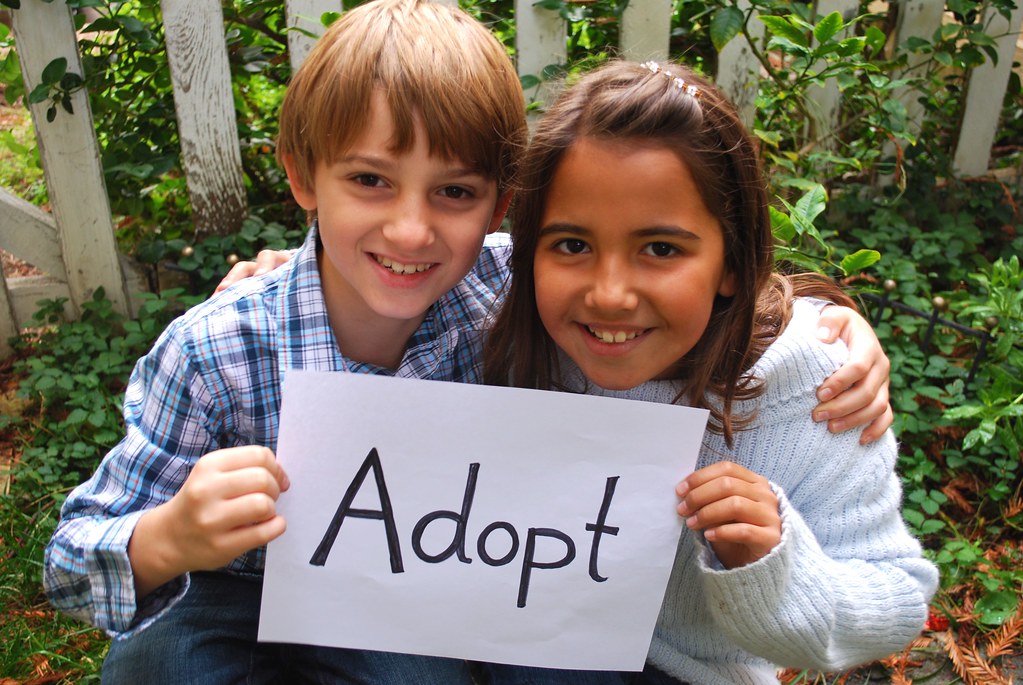Many Americans have a rather fuzzy picture of how adoption works in our country. Adoption impacts approximately five million American children and their families. Adoption is complicated, but well worth learning about.
Private Adoption
Private adoption (AKA Domestic Infant Adoption) is when a woman decides her baby should be adopted by another family. In this type of adoption, the birthmother has all the control. She chooses to relinquish her parental rights after she chooses the adoptive parents and decides how much relationship she wants to have with the adoptive parents and the child.
Birthmothers choose between open or closed adoption. Open adoption is when the birthmother maintains some amount of relationship with the adoptive parents and the child. Closed adoption is a complete cut-off of the relationship. Because of open adoption’s emotionally healing effect, 95% of private adoptions in the U.S. are open adoptions.
Private adoption is free for the birthmother. Adoption agencies pay for all the birthmother’s medical expenses (including emotional counseling) and will also often pay living expenses (including rent, groceries, utilities, and maternity clothing) during the woman’s pregnancy.
Adoption agencies often receive funding to care for the birthmother from the adoptive parents. Adoptive parents must be willing to pay case management, counseling, medical, legal, home study, post-placement contact, and travel costs plus other fees determined by the specific agency. This explains why domestic infant adoption is so expensive with average costs around $40,000 with top agencies.
LifeNews is on TruthSocial. Please follow us here.
Despite the high costs, an estimated one to two million people are waiting to adopt, meaning when a woman decides she wants her child adopted, that child will be adopted. Many people support abortion because they believe the alternative dooms children to a miserable system with no loving family. That is false! That is not how private adoption works. There are no unwanted children without families stuck in this system.
Public Adoption
Public adoption, also known as foster care adoption, is when the State terminates the biological parents’ rights and finds an adoptive family for the child. The goal of the foster care system is not adoption, but reunification of the child with his or her biological parents. When reunification is impossible, the State seeks adoptive parents for the child. Children who are waiting for potential reunification or adoption are the children “stuck in the system.”
According to a recent study, 53% of children in foster care are reunited with their biological families, 25% are adopted, 9% age out of the system, and 13% remain in the system.
The federal government funds the foster care system, spending approximately $10.6 billion on foster care in 2023. Public adoption is significantly more affordable than private adoption, ranging from $0 to $2,500. Families who adopt from foster care also often receive a monthly stipend to help cover the costs of raising the child.
State and Federal Laws
Understanding adoption laws in the U.S. is challenging because they vary greatly from state-to-state. The states decide licensing requirements for who can arrange adoptions, requirements for adoptive parents, home study requirements, interstate placement procedures, and post-adoption contact agreements. States also pass laws regarding when a birthmother may consent to adoption, how long after a birthmother may revoke consent, and rights of the biological father.
Private adoption agencies play a crucial role in helping people navigate their state’s laws and connecting people with experienced lawyers. Private agencies may also establish their own stipulations on such things as marital status, age, other children in the home, and whether LGBTQ couples may adopt. Foster care adoption is usually handled through a state’s Child Services Department.
All 50 states plus D.C. and Puerto Rico have established Safe Haven Laws which designate safe places for birthmothers to place their unwanted children and provide protections for birthmothers. The Interstate Compact on Placement of Children (1990) is a compact between all 50 states, D.C., and the U.S. Virgin Islands that regulates the placement of a child out of state.
There are three major federal laws regarding adoption. The Adoption and Safe Families Act (1997) regulates foster care and foster care adoption. The Multi-Ethnic Placement Act (1994) prohibits agencies from discriminating on the basis of race, color, or national origin of the adoptive parent or the adoptee. The Indian Child Welfare Act (1978) upholds Native American tribal rights for Native American children involved in adoptions.
Policy, Prayer, and Charity
The major policy concerns related to adoption are reporting, education, and funding. Currently, the federal government only tracks and reports on intercountry adoptions, leading to little statistical consensus on either private or public adoption in the U.S. Another issue is that health care workers, social workers, potential parents, and the American public remain under-educated about adoption. The National Council for Adoption advocates for adding adoption information to sex ed curricula and providing federally funded adoption education for health care workers and social workers.
As Christians, we should promote legislation that keeps adoption safe and accessible and educates women about adoption as the life-affirming choice when facing an unplanned pregnancy. We can also support adoption by learning about it, donating to adoption charities, praying for the children and the families involved in the adoption process, and following God’s lead if He calls you to receive a child into your home.
LifeNews Note: Natalie Spaulding writes for the Washinton Stand, where this column originally appeared.








